For thousands of years, traditional Tibetan medicine (TTM) has been a beacon of healing wisdom, drawing from the essence of traditional Chinese medicine, ancient Indian remedies, and classic Arabic treatments. Rooted in the highlands of the Himalayas, where the air is thin and the landscape is sparse, Tibetan medicine has thrived in the midst of mystique.
In this article, we will try to demystify the secrets of Tibetan Medicine, taking you on a journey into its rich history, fundamental principles, incredible benefits, and therapeutic wonders. Join us as we unveil the magical medicines from the "Roof of the World."
What is Tibetan Medicine? What is Tibetan Medicines Made of?
With a history spanning over 2,500 years, Tibetan medicine, known as Sowa Rigpa or Amchi in the Western world, stands as one of the world's oldest traditional healing systems, offering a unique perspective on health and well-being.
Tibetan Medicine, deeply rooted in Tibetan Buddhism, serves as a testament to the profound connection between Tibet's history, culture, and healthcare practices. It is a holistic medical system that harmoniously blends ancient philosophy, astronomy, biology, physics, and chemistry.
 Tibetan Medicine is deeply rooted in Tibetan Buddhism.
Tibetan Medicine is deeply rooted in Tibetan Buddhism.Tibetan Medicine boasts a complete theoretical framework and a wealth of clinical practices. A defining characteristic is the use of herbs sourced from the pristine high-altitude regions of Tibet. These herbs possess exceptionally high concentrations of active compounds, rendering Tibetan medicines potent and less prone to drug-induced side effects. This approach aligns with the growing preference for natural and holistic remedies.
Tibet's abundant natural resources provide a rich collection of medicinal materials, including over 2,000 plant species, 159 animal species, and 80 mineral varieties. This wealth sets Tibetan medicine apart globally. Of the 2,294 recorded Traditional Tibetan Medicines (TTM), over 70% are plant-based, 12% derive from animals, and 14% from minerals. Interestingly, a significant portion of TTM shares raw materials with Traditional Chinese Medicine (TCM), bridging the gap between these ancient healing traditions while preserving Tibet's unique herbal heritage.
History of Tibetan Medicine: How old is Tibetan Medicine?
Tibetan Medicine, dating back thousands of years, embodies the early Tibetan mastery of embryology, physiology, pathology, anatomy, and pharmacology. Yutok Yonten Gonpo, the system's founder, amalgamated insights from Chinese, Arabic, and Indian medicine, culminating in "The Four Medical Tantras," the cornerstone of Tibetan Medicine.
Its birthplace, Namye Valley in south Mainling County, symbolizes the origins of this remarkable tradition. It evolved through millennia of confronting the harsh plateau's natural challenges and diseases. Early Tibetans possessed an innate understanding of plants, animals, and minerals' medicinal properties, laying the groundwork for Tibetan Medicine.
 Tibetan medicinal materials
Tibetan medicinal materialsPre-Buddhist Tibet already employed herbal remedies and shamanistic rituals, emphasizing the mind-body balance. The introduction of Buddhism, credited to princesses Bhrikuti and Wen Cheng, merged indigenous practices with Buddhist knowledge.
King Trisong Deutsen's reign hosted an international medical conference in the 8th century, uniting physicians from India, Nepal, Persia, Greece, China, and beyond. This gathering led to Yutok Yonten Gonpo's synthesis of medical knowledge, resulting in "The Four Tantras." These texts, paired with commentaries and oral teachings, underpin Tibetan Medicine's ongoing research and development.
What are the principles of Tibetan Medicine?
Tibetan Medicine centers on the principle of the three humors: RLung (wind), mKhris-pa (bile), and Bad-kan (phlegm). These humors govern bodily functions and are influenced by the three poisons of desire, hatred, and delusion, deeply intertwined with Tibetan Buddhism. RLung facilitates growth and movement, mKhris-pa regulates temperature and digestion, and Bad-kan sustains bodily fluids and aids digestion. Maintaining a harmonious balance among these humors is vital for health.
 Tibetan monks are grinding the herbs.
Tibetan monks are grinding the herbs.The system also recognizes five proto-elements within the universe—wind, earth, water, fire, and space—each playing a unique role in bodily functions and the interaction between herbs and the environment, as per Tibetan medical theory.
Tibetan Medicine is renowned for its understanding of physiology, organs, and diagnostic methods. It operates on the theory of three factors, emphasizing the balance between seven bodily substances (diet, blood, flesh, fat, bone, marrow, and seminal fluid) and three excrements (sweat, urine, and stool). Upholding this equilibrium remains a fundamental principle for ensuring good health.
What are the Benefits of Tibetan Medicine?
Rooted in its deep understanding of the mind's nature, Tibetan Medicine offers a wealth of benefits. It excels in treating chronic diseases like hepatitis, gastritis, and rheumatism, fostering well-being. Scientific studies confirm Tibetan medicine's positive effects on quality of life, sleep, disease management, and cancer remission.
At the core of Tibetan Medicine lies a profound connection with nature. Medicinal plants, herbs, fruits, and minerals are cherished gifts from Mother Earth, carefully harnessed to create herbal dietary supplements. These supplements, not mere medications but pure natural mixtures, have been used for centuries to restore energy, remedy deficiencies, and enhance psychological strength.
 At the core of Tibetan Medicine lies a profound connection with nature.
At the core of Tibetan Medicine lies a profound connection with nature.Central to Tibetan Medicine is the balance of the five basic elements—earth, water, fire, wind, and space—within the human body and mind. This holistic approach aims to maintain equilibrium, promoting health. In today's challenging times, Tibetan Medicine employs traditional herbal supplements, lifestyle guidance, meditation, and physical exercise to enhance well-being. These practices not only prevent physical ailments but also support organ health, address root causes, and restore normal bodily functions, carrying forward their efficacy from ancient times to the present day.
For tourists traveling to Tibet, one of the most common Tibetan medicines is Rhodiola rosea, which has the potential to prevent high-altitude sickness. Altitude sickness refers to the physiological discomfort experienced when transitioning from low-altitude regions to high-altitude areas due to factors such as hypoxia and dry air. Symptoms may include headaches, dizziness, nausea, vomiting, insomnia, fatigue, drowsiness, and even unconsciousness. While Rhodiola rosea can help alleviate some of the pathological damage caused by altitude sickness, it cannot completely prevent it.
What are the Side Effects of Tibetan Medicine?
Tibetan Medicine stands out for its minimal side effects when used correctly. These medicines are known for their affordability and effectiveness in alleviating disease-related symptoms with barely any adverse effects. Its formulas are meticulously balanced, offering a safe treatment approach. However, like any medical practice, it's crucial to heed qualified medical advice when using Tibetan Medicine. It plays a significant role in the world's traditional medical system, particularly in managing chronic illnesses.
What are the Therapies of Tibetan Medicine?
Tibetan Medicine employs diverse diagnostic methods, including observation, interrogation, and pulse-taking. These methods help categorize diseases into heat and cold symptoms, guiding treatment approaches such as inducing vomiting, clearing heat, purging, and diuresis. Tibetan Medicine goes beyond medicines, incorporating therapies like acupuncture, bloodletting, moxibustion, and medicated baths, with the latter being the most popular and characteristic.
 Tibetan Medicine Pulse-taking
Tibetan Medicine Pulse-takingMedicated baths, the hallmark of Tibetan Medicine, utilize diverse ingredients for treating conditions like rheumatism, skin disorders, and herniated discs. The process involves soaking in a medicinal solution, purifying blood, and enhancing joint function over a 7 to 10-day course.
Tibetan Medicine excels in diagnosing humoral constitutions influenced by maternal diets during pregnancy, aiding predictive prevention. Environmental factors, lifestyles, and behaviors are considered holistically.
Digestion plays a pivotal role in revealing bodily imbalances. Pulse and urine assessments guide diagnoses, with treatment plans tailored for long-term care, involving herbal remedies, dietary changes, behavior modifications, and external treatments.
For those interested, Tibetan Medicine offers practices like meditation and Yantra Yoga, aligning with its broader philosophy, emphasizing balance and health.
Conclusion
Tibetan Medicine is more than just a medical system; it embodies a philosophy of balance and well-being, fostering a healthy mind and body. In our ever-evolving quest for health and vitality, Tibetan Medicine stands as a timeless guide, bridging ancient wisdom with contemporary well-being. It is a gift from the high-altitude lands of Tibet to the world, proving that the magic of medicine can indeed be found on the "Roof of the World."
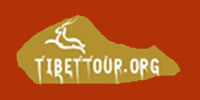
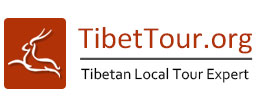


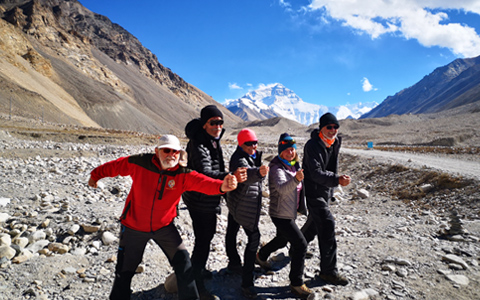

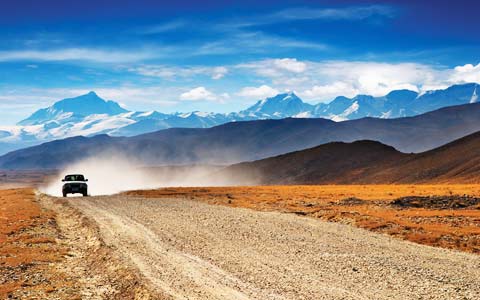

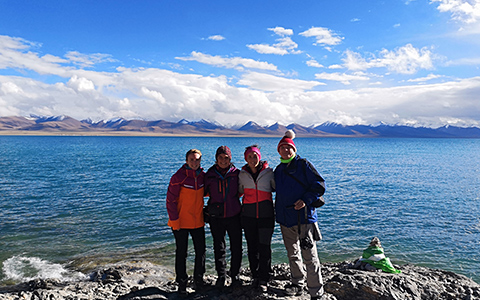
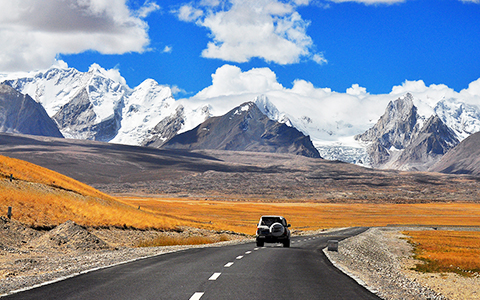







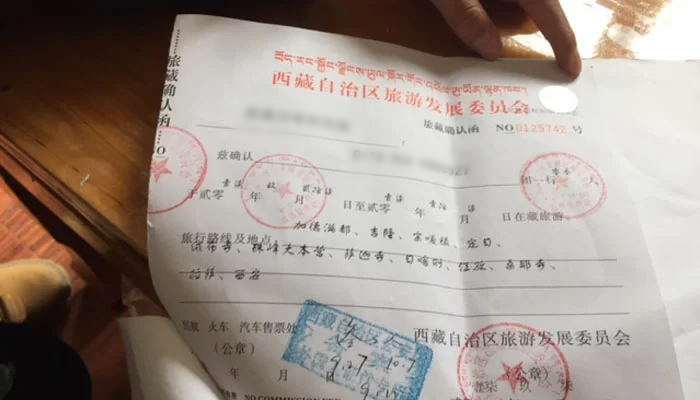







 Tibetan Medicine is deeply rooted in Tibetan Buddhism.
Tibetan Medicine is deeply rooted in Tibetan Buddhism.
 Tibetan medicinal materials
Tibetan medicinal materials Tibetan monks are grinding the herbs.
Tibetan monks are grinding the herbs. At the core of Tibetan Medicine lies a profound connection with nature.
At the core of Tibetan Medicine lies a profound connection with nature.
 Tibetan Medicine Pulse-taking
Tibetan Medicine Pulse-taking








Ask a Quick Question